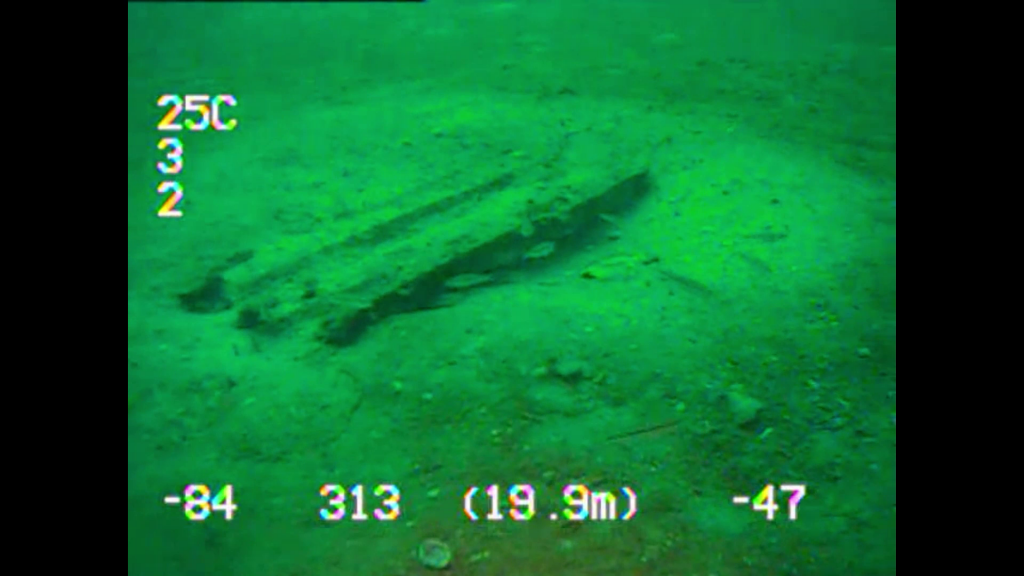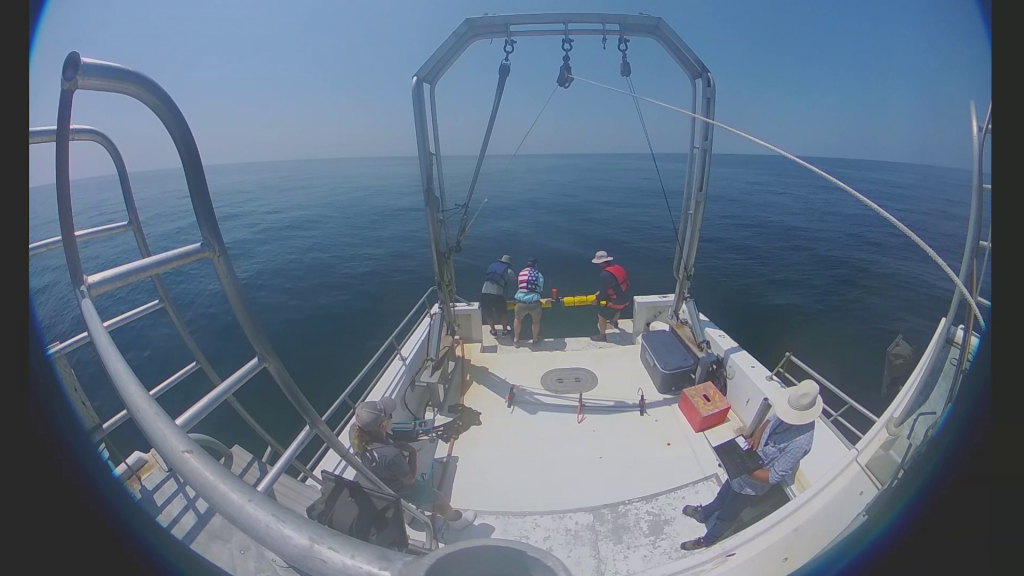TUSCALOOSA, Ala – Deep below the Gulf of Mexico’s surface is a Cypress forest that has laid dormant for approximately 60,000 years. Discovered only about a decade ago, its wood is not corroded. Other than removing some pieces to determine its age, it has remained virtually undisturbed by human hands. It’s a secret, peaceful habitat for marine creatures.
Scientists, however, have many questions about it: how far out did the coastline stretch all those centuries ago, and can the forest help us predict coastal land loss in the future? How can it be preserved, yet studied so we can better know its story? How large is it?
The last question could soon be answered by Dr. Aijun Song, an associate professor of electrical and computer engineering at The University of Alabama. Dr. Kristine DeLong at Louisiana State University approached Song about using his team’s autonomous underwater vehicle to map the aquatic grove 60 feet below the surface. Research crews were interested in finding out just how large the forest is, but sending divers down in 20-minute increments was taxing.
“That’s where the AUV comes in,” said Song. “We can use them to repeatedly map the region with preprogrammed missions over extended periods of time.”


For a few days over the summer, Song, along with his student researchers, used two vehicles to examine the forest. The AUV glided over the tree trunks to take pictures of the structure. He also brought along a remotely operated vehicle, recording video that helped confirm LSU’s hypothesis that the forest might be larger than initially thought.
Because of its size, completely mapping the forest with only these two vehicles can take several days. Song and his team previously received funding from the National Science Foundation to purchase the AUVs and develop underwater acoustic communication protocols between them.
After demonstrating how valuable these vehicles were in collecting data from the forest, Song hopes to build a bigger fleet to reduce the time it takes to map the rest of the submerged Cypress realm.
“For example, a small patch of 500 by 500 square meters in the ocean would take a long time,” he said. “If we have multiple vehicles, then we can survey the Gulf floor and get better images at a much faster rate.”
The faster researchers can get a better picture of this underwater wonderland, the faster their remaining questions gain answers.
“I think this is a fascinating science and engineering tale,” Song said. “It really amazes me how the trees were buried and preserved over time, and now in modern times, we have to find out the story of the forest.”
Song’s current research is supported by the National Science Foundation (Award: CNS #2016726 and CNS #2048188) and United States Geological Survey (Award: #G23AC00157). The underwater vehicle purchase was partially supported by the Alabama Water Institute Equipment Support Program.
